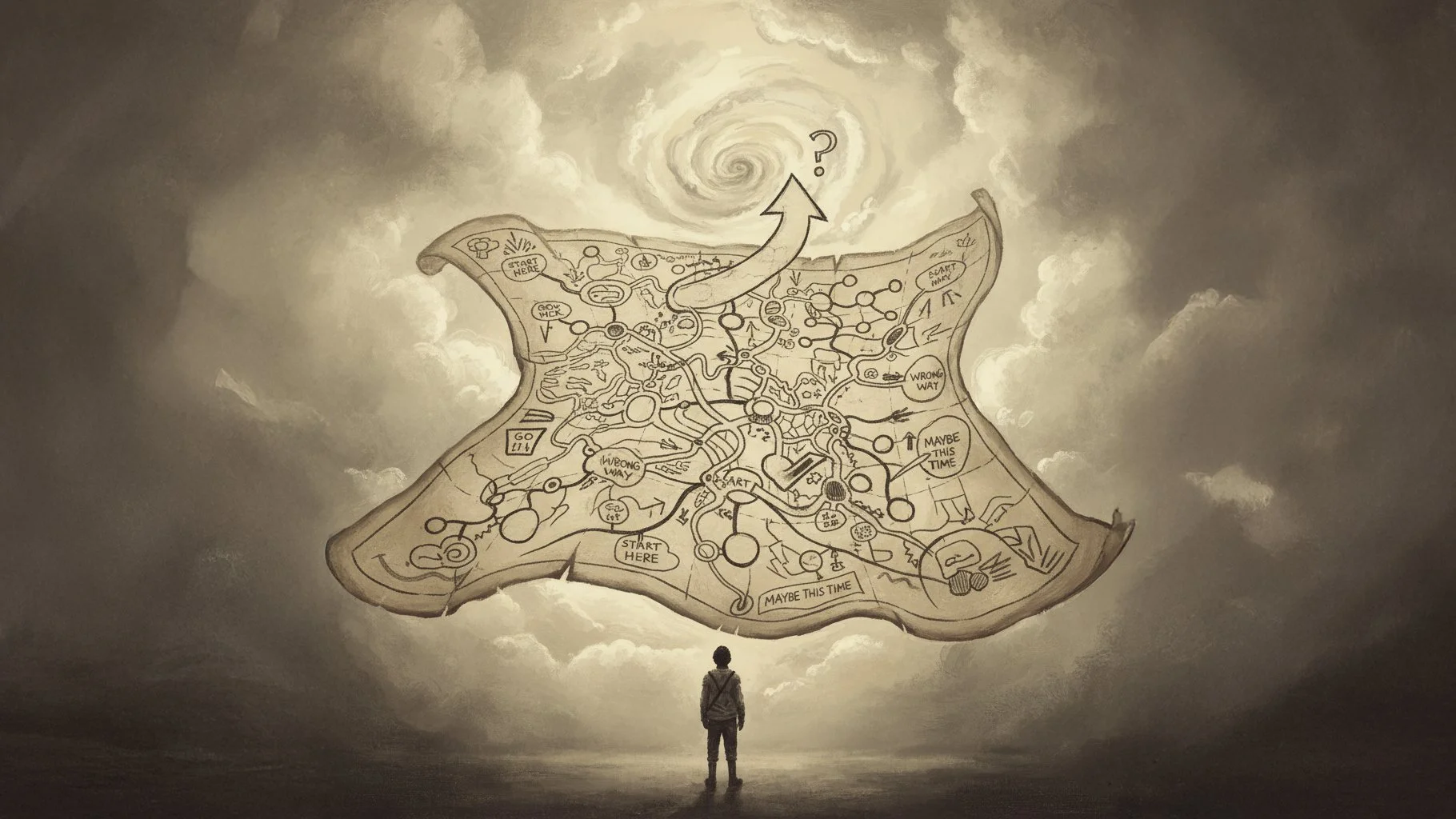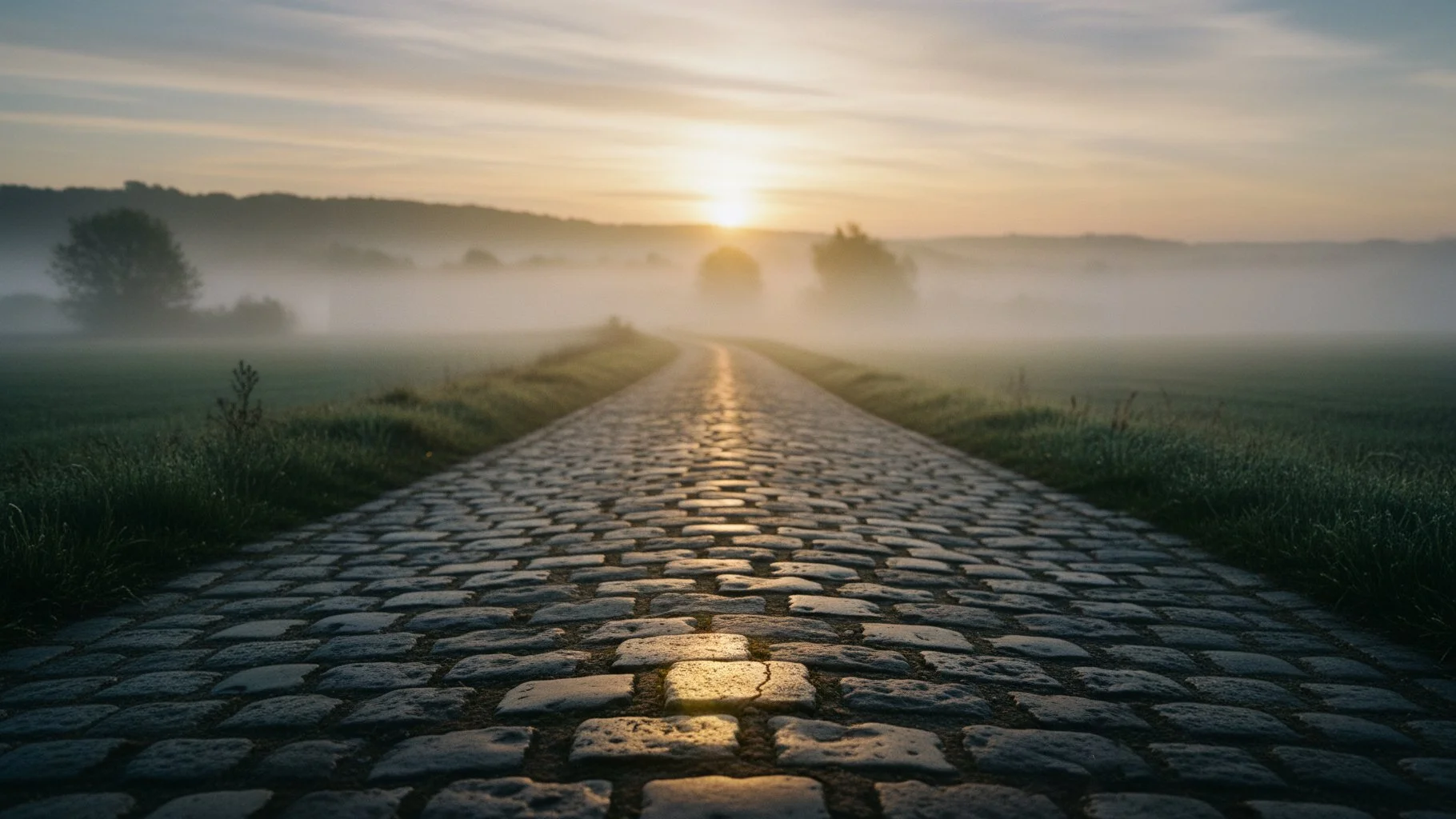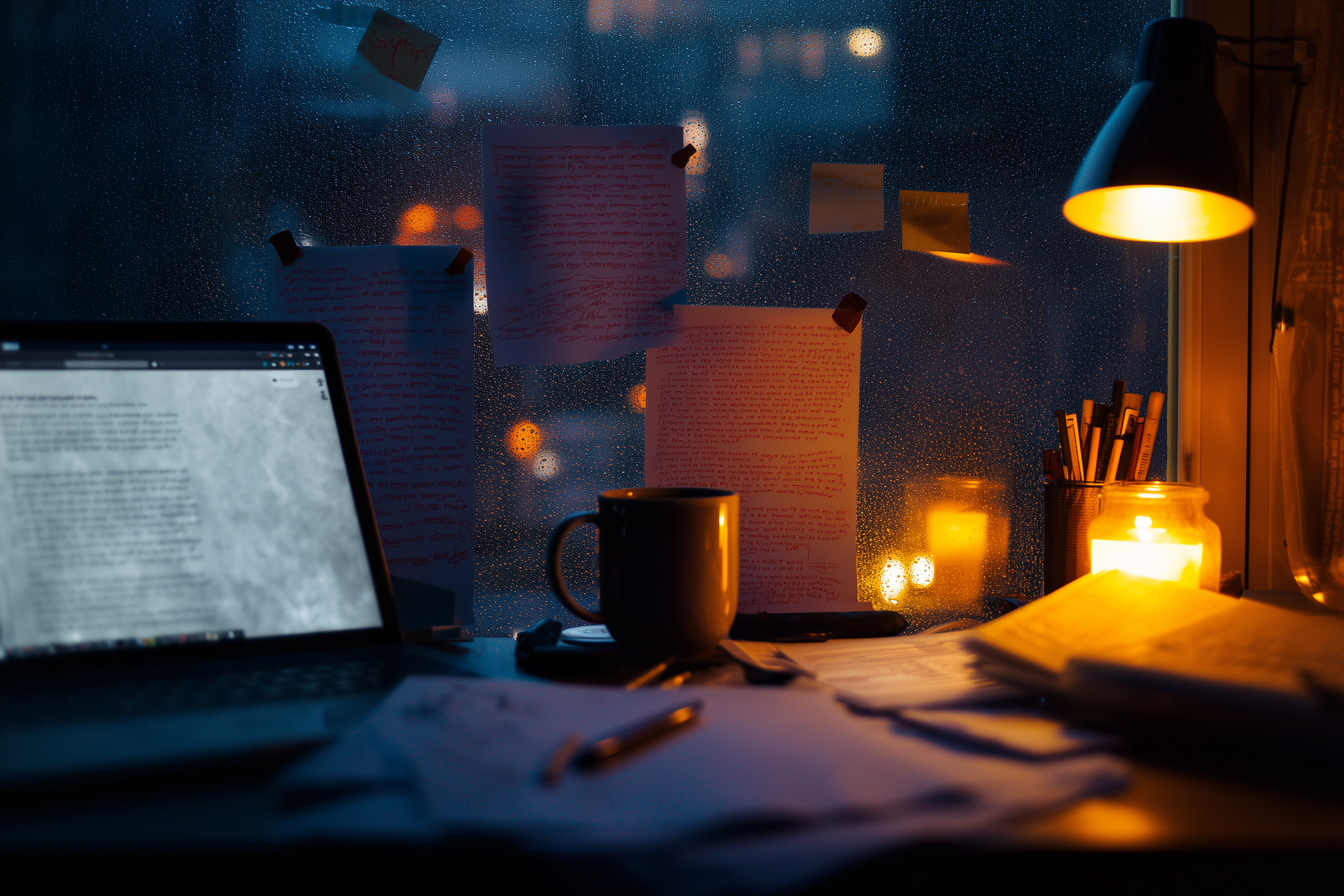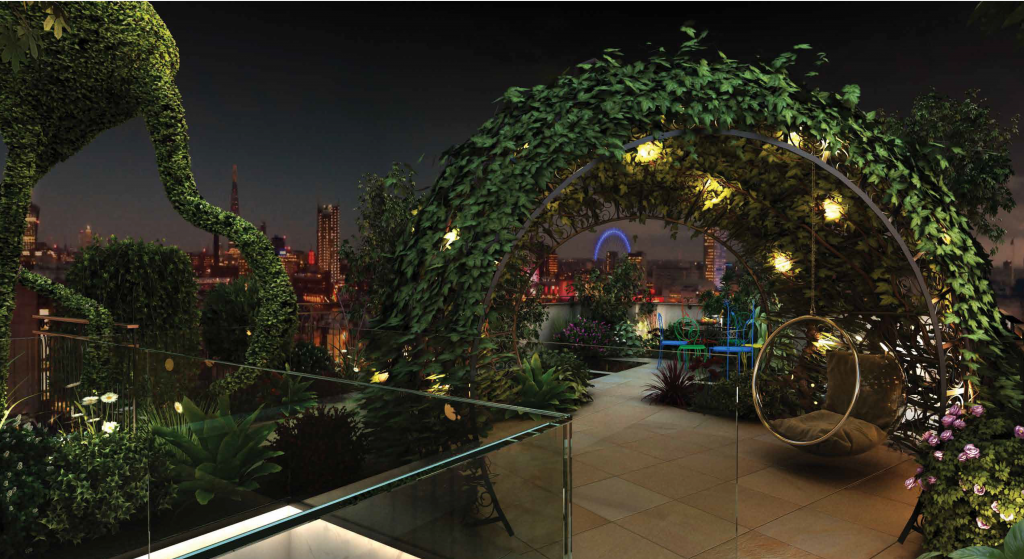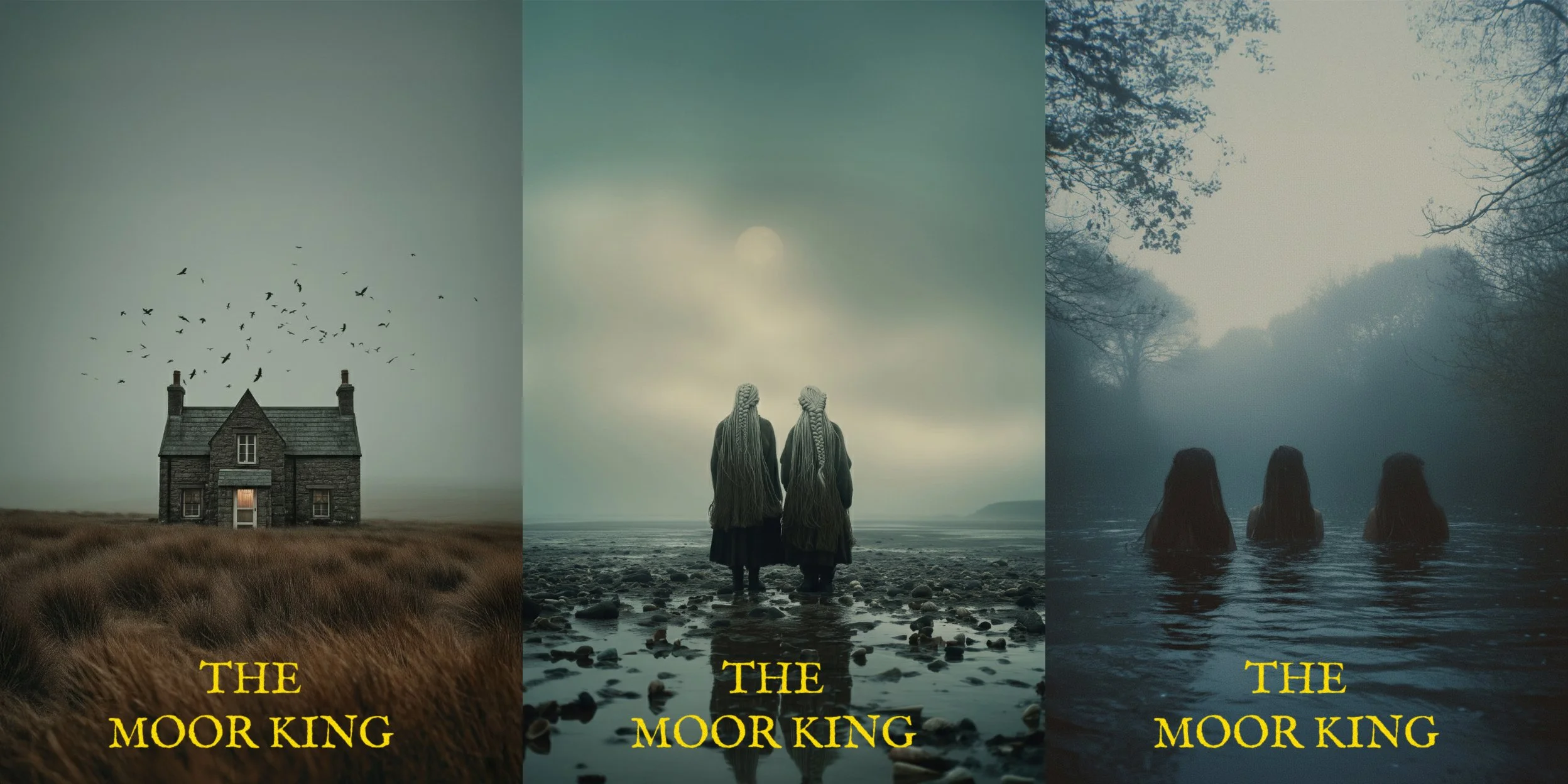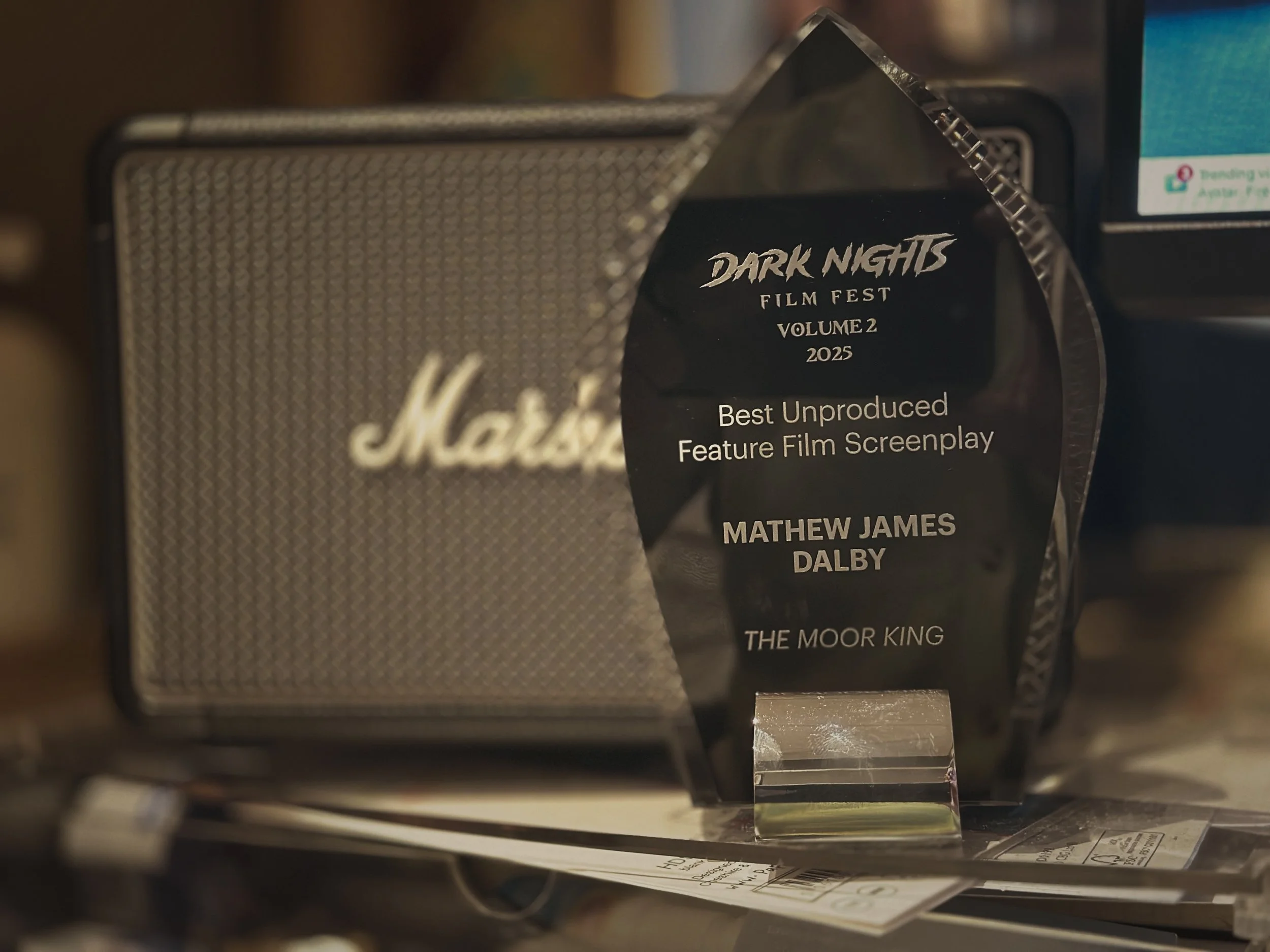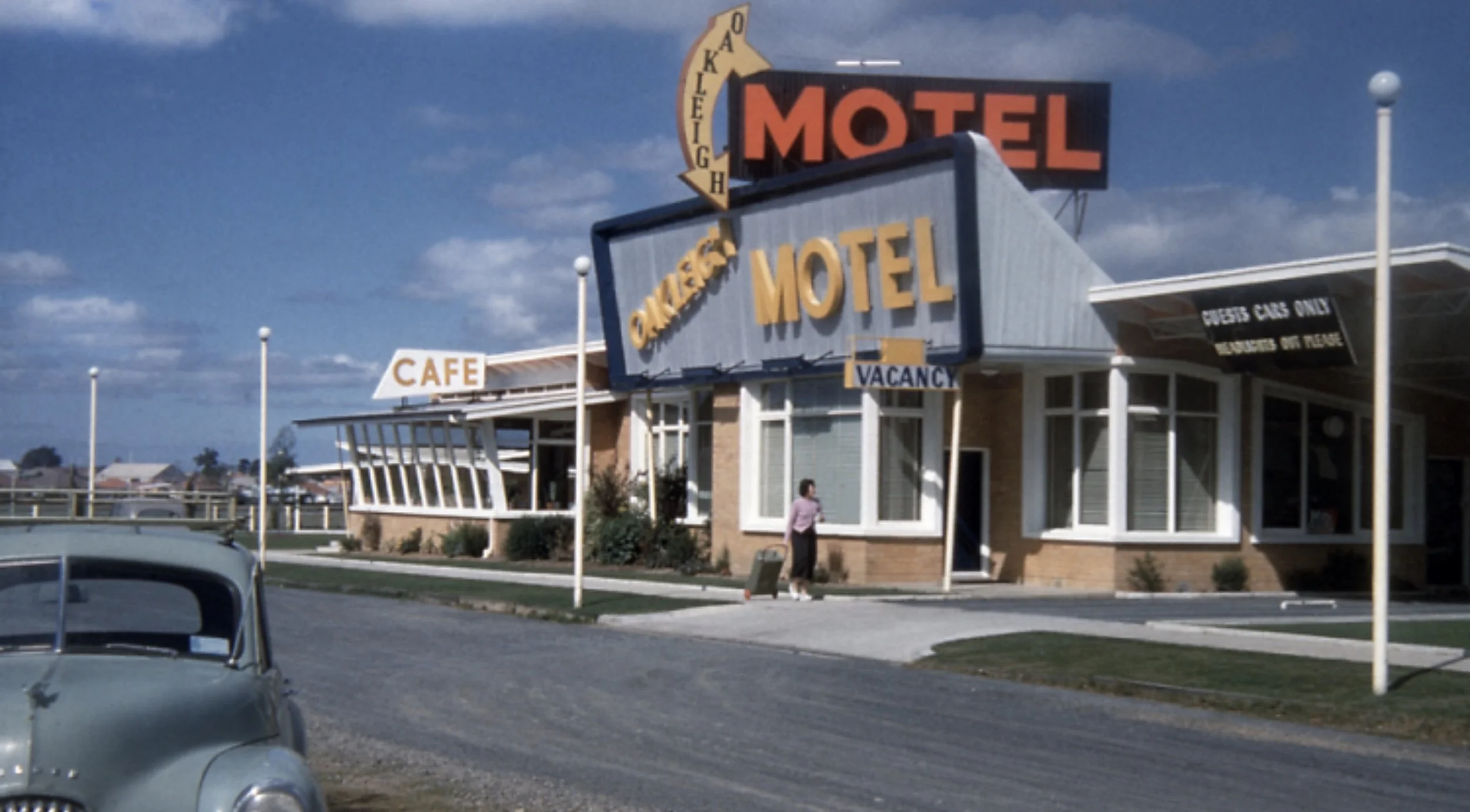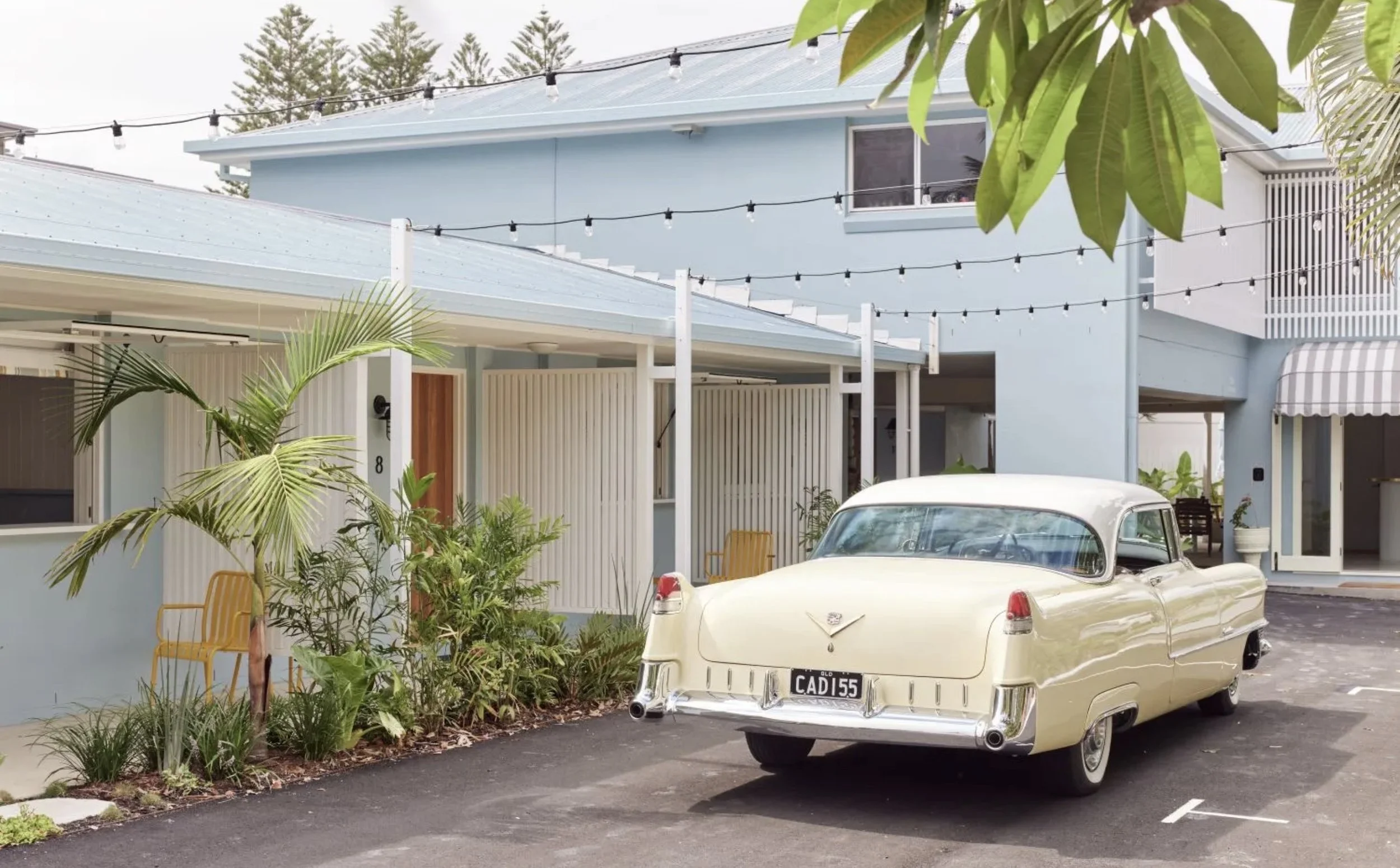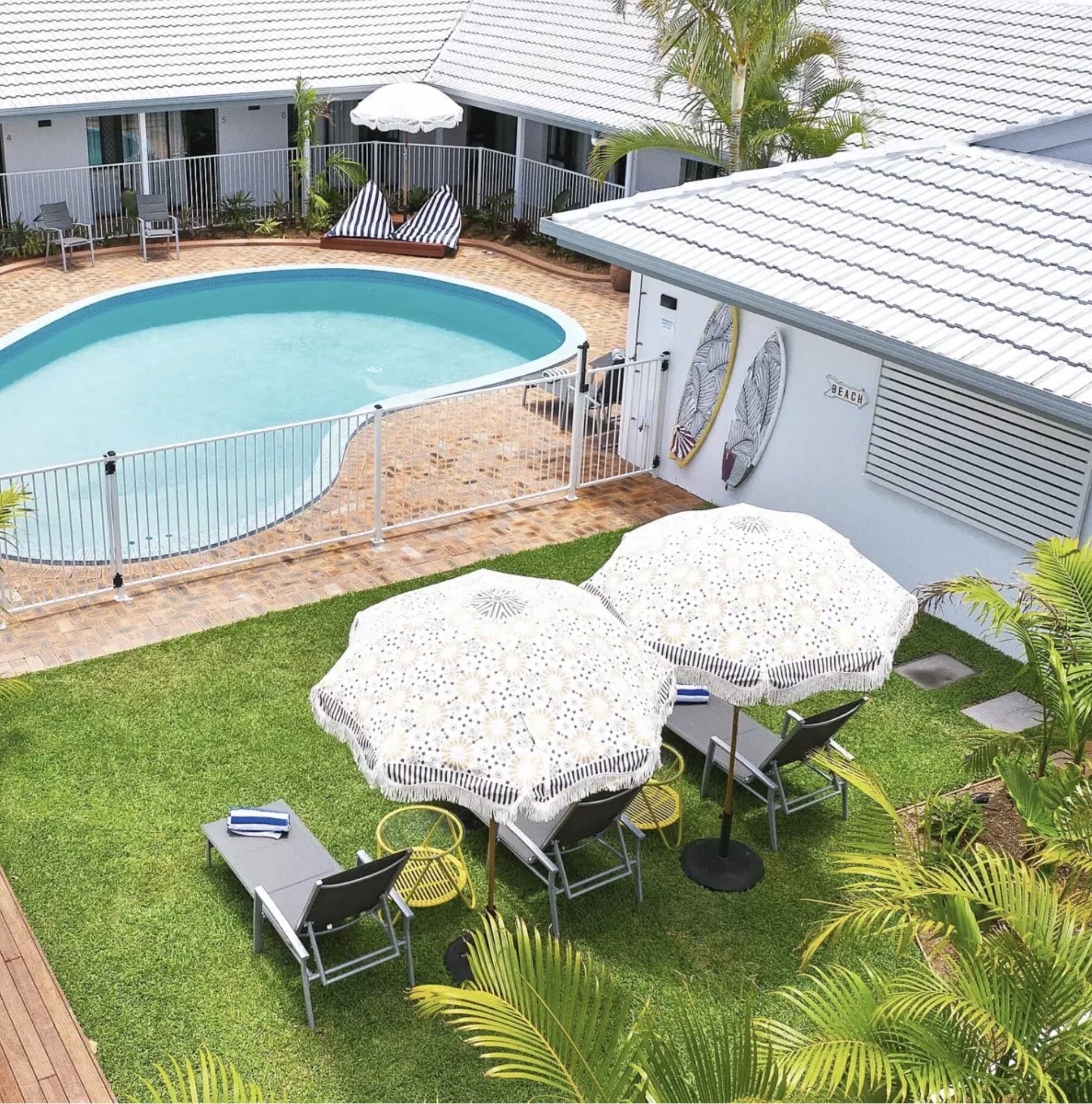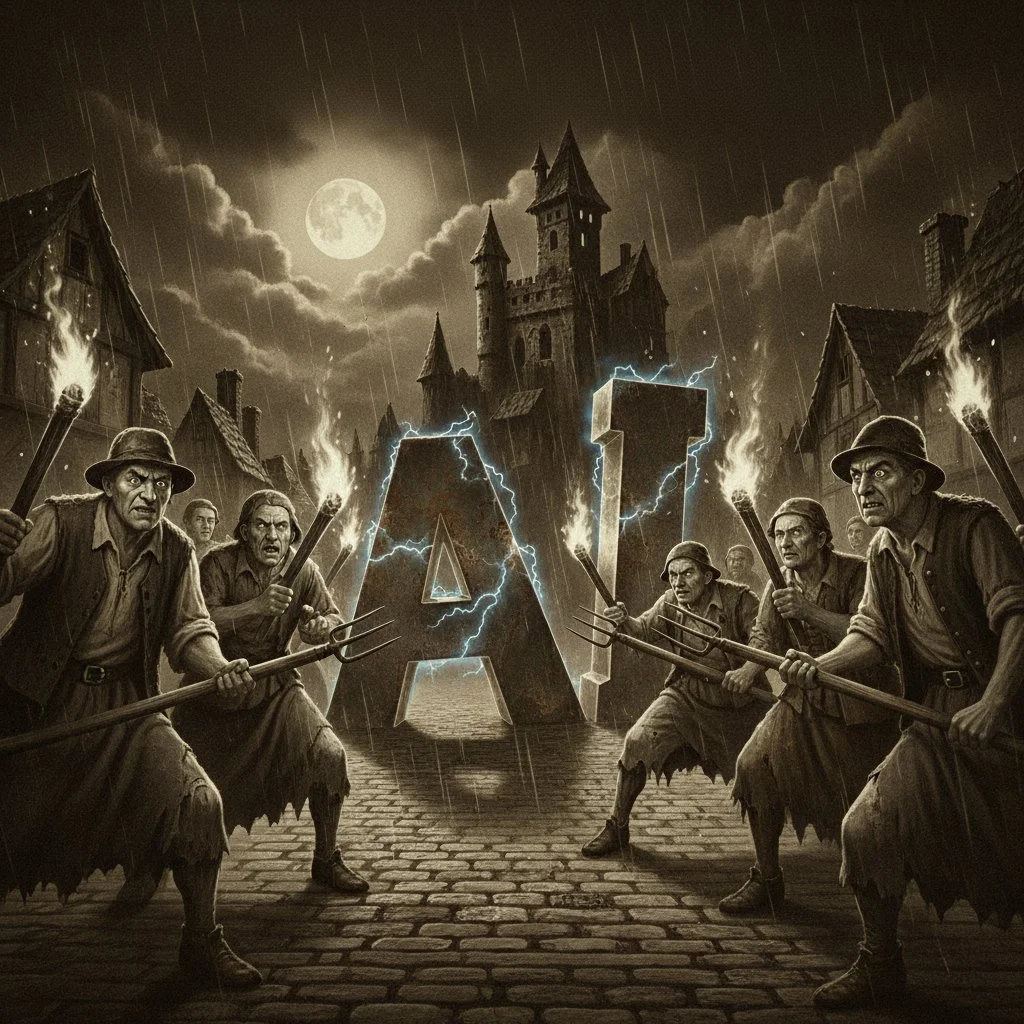Why I Ditched Long-Term Goals
Mathew Dalby on trading decade-long plans for 12-month focus. Why short-term goals build momentum, creativity, and joy — and how StudioFAB thrives on quick, sharp projects.
The Big Plan Illusion
For years, I adored a grand plan. The ten-year strategy. The whiteboard full of arrows. The “by the time I’m fifty, I’ll have…” list.
But here’s the quiet truth I’ve learned: long-term goals are often fool’s gold.
They sound noble, but they dangle just far enough away to keep you forever reaching, never arriving. You chase something so distant that you stop noticing the side quests — the unexpected turns, obsessions, people, or ideas that might’ve become something extraordinary if you weren’t so blinkered by your plan.
The Power of the Side Quest
History’s full of proof that detours can be more fruitful than destinations.
Columbus set out for India and found the Americas.
Fleming was trying to grow bacteria and stumbled upon penicillin.
Percy Spencer was testing radar equipment when a chocolate bar melted in his pocket — and voilà, the microwave was born.
None of them were following a decade-long roadmap. They were curious, awake, and paying attention to the world as it actually was, not how they’d planned it to be.
StudioFAB and the Short Game
At StudioFAB, we see the same thing in design.
Everyone loves the big projects — the ones that take years, a small army of consultants, and entire walls of drawings. And they’re brilliant, of course. But the short, sharp ones — the pop-up competition entries, the rebranding sprints, the one-off hospitality refreshes — those are where we stretch a different set of muscles.
They demand focus, speed, and instinct. You make decisions fast. You trust your gut. You find clever shortcuts. You rediscover agility. And sometimes, you surprise yourself with how inventive you can be when you don’t have the luxury of time.
Necessity is still the mother of invention.
Give me half a dozen quick, compact projects over one big behemoth any day. They keep the studio nimble, creative, and alert — and they remind us that brilliance doesn’t always need a three-year timeline or a $30 million budget. Sometimes it just needs a spark, a deadline, and a good cup of coffee.
Why Short-Term Wins Matter
These days, I set twelve-to-eighteen-month goals.
Tight, focused bursts. Something I can define, touch, complete. Then move on.
The win is real. The progress visible. The energy stays alive.
You learn faster, adapt quicker, and avoid the emotional fatigue of chasing a horizon that never gets closer. Small goals keep your momentum human — fast enough to feel progress, slow enough to notice the scenery.
Myopia and Missed Sunsets
When you live in long-term goal mode, you risk a kind of blindness. You’re so fixated on the destination that you miss the texture of the journey — the people you meet, the moments of calm, the small wins that quietly build a good life.
Let’s not trade every sunrise and sunset for a dream that might never deliver what you think it will.
Because those are the real dividends — the ones you don’t see until you stop staring at the far-off peak and notice the light on the horizon.
Small Stones, Big Path
Enough short-term goals, stacked with intent, tend to form a long-term one anyway.
But you’ll have lived far more of your life getting there.
No decade-long manifestos. No “vision boards for 2035.”
Just the next clear, achievable thing — done properly, with presence, and a little joy along the way.
You can keep chasing the summit if you like.
I’m happier building the path — one small, beautiful stone at a time.
This Weekend, I Became an International Award-Winning Screenwriter.
This weekend, I became an international award-winning screenwriter. What began as a late-night creative experiment has become an unexpected extension of StudioFAB — a reminder that design and storytelling are two sides of the same creative coin.
This weekend, I became an award-winning screenwriter.
Which is both delightful and faintly ridiculous. Delightful because it is true, and ridiculous because I still half expect someone to tap me on the shoulder and say, “All very amusing, Mathew, but back to the hotel drawings, please.”
I took up screenwriting late last year as a serious hobby.
Not golf. Not pottery. Screenwriting.
I thought it would be a harmless creative detour. A bit of cerebral stretching. Something to do when the rest of the house was asleep and the world had stopped demanding floor plans and value engineering.
The Accidental Writer
Fast forward a few months, and somehow there are now three screenplays with my name on them. Each has either won or placed in international competitions, and one of my other scripts is currently with a production company in Los Angeles.
It’s all a bit surreal.
But here’s the truth: writing didn’t feel like learning something new. It felt like remembering something familiar. After thirty years of designing hotels, homes, and the occasional palace, I realised that what I really do for a living is tell stories. Screenwriting is simply design without walls. The materials are different, but the purpose is the same.
Both ask: what do I want someone to feel?
Design, Story, and the Same Question
Design has always been my language. I choreograph light, texture, and space to build emotion. A lobby is an opening act. A corridor is suspense. A guestroom is resolution. The story of arrival, pause, and rest.
Writing is the same, except your tools are dialogue, tension, and silence. You still craft rhythm. You still edit ruthlessly. You still pray no one notices the joins.
Both fields demand empathy. A hotel succeeds when it anticipates its guests’ emotions before they do. A film succeeds when the audience recognises themselves in the characters. You build both from the inside out. You design for feeling, not function.
Lessons Between Two Worlds
Design taught me patience. Projects can take years. You learn to trust the slow burn. Screenwriting, on the other hand, demands precision. You have ninety pages to make someone care.
It’s merciless.
Every word must pay rent.
Yet that discipline makes me sharper back in the studio. I now look at drawings like dialogue. If a line doesn’t advance the story, it goes.
Creativity isn’t about invention. It’s about listening. When you design a space or write a character, you listen for what it wants to be. You remove what’s false until what’s left feels inevitable. That’s when it’s right.
On Winning (and Not Losing Focus)
The funny thing about winning awards is that people assume you had a plan. I didn’t. I entered one festival because the submission link popped up at midnight, and I thought, Why not.
Then I heard I’d made it to the finals, well, I was going to go anyway. But when they announced my name…
But once the disbelief wore off, what stayed with me wasn’t pride.
It was perspective.
Creativity doesn’t care about categories. It finds new rooms to inhabit.
And before anyone wonders, NO, I’m not taking my eye off StudioFAB.
Quite the opposite.
Writing has sharpened it. It’s made me see design in new ways, tighter, bolder, more narrative-driven.
StudioFAB remains my focus, my craft, and my home. The screenplays are simply another expression of the same creative muscle. I see it as a parallel practice that feeds back into how we think, how we see, and how we design.
Night Work
I still spend my days leading the studio, working with architects, builders, and hoteliers to craft spaces that make sense of chaos. But at night, I slip into another kind of world-building. One where walls are made of words, where atmosphere lives in subtext, and the soundtrack is the gentle snoring of the dogs.
It’s slower, lonelier, and oddly liberating.
Storytelling, in any form, is the purest act of empathy. You create a structure for someone else to step into, a place to feel something safely. Whether that space is a courtyard or a scene in a film hardly matters. Both are invitations.
Rediscovering Play
Screenwriting reminded me of something I’d quietly lost in design, the idea of play, the unguarded joy of making something purely because you can.
In design, we often prioritise pragmatism and accountability over curiosity, making it a luxury.
Writing reintroduced it.
That spark of let’s see what happens if…
Both my worlds feed each other. Writing makes me observant. Design keeps me grounded. One deals in story, the other in structure. Together, they form the full circle of creativity.
Staying Grounded
When a script began to gain traction in Los Angeles, a friend asked if I was tempted to leave design behind.
Not a chance.
The joy lies in the crossover.
To move from drawing a lobby to writing a scene is to shift between two dialects of the same language.
StudioFAB remains the engine. The writing simply adds a new instrument to the orchestra. The focus, as always, is on building, whether it’s a space or a story.
Closing Thoughts
So yes. This weekend, I became an award-winning screenwriter. And on Monday morning, I went straight back to the studio. The two are not at odds. They are the same craft, played in different keys.
Creativity doesn’t live in compartments.
It leaks.
It overlaps.
It misbehaves.
And that is precisely what keeps it alive.
The Gift of Constraint (and Why Perfection Needs a Good Kick in the Shins)
We tend to treat constraints as enemies — the budget too small, the site too narrow, the client too picky. But limits don’t kill creativity, they ignite it. The best work happens when you stop trying to do everything and start focusing on what matters. Here’s how structure, restraint, and a touch of discomfort can turn frustration into innovation.
“The very things that held you down are gonna carry you up and up and up!”
In the summer of 1501, Florence was facing a very Italian problem. Lying flat in the cathedral courtyard was a massive slab of marble, abandoned by two sculptors and described rather tragically as “a certain man of marble, badly blocked out and laid on its back.”
You can picture it, can’t you? A once-promising block, left sunburnt and pigeon-kissed, a sort of marble roadkill in the Renaissance sunshine.
For forty years, it sat there, too flawed to use and too precious to throw away. Then along came a 26-year-old sculptor, barely out of artistic adolescence, and with the sort of misplaced confidence we usually associate with first-year architecture students.
He took one look and said, “I’ll take it.”
The marble was awkwardly narrow, riddled with veins, and so brittle it made everyone nervous. But instead of fighting against the constraint, the sculptor leaned into it. The slab dictated the pose, the tilt of the head, even the famously oversized right hand — all the product of necessity rather than whim. The sword and Goliath’s head? Not missing, merely uninvited. There simply wasn’t room.
The sculptor was Michelangelo, and the sculpture was probably the most famous piece in the world, David.
It was the world’s greatest case of make-do and mend.
When finished, the statue was so magnificent (and so heavy) that the cathedral roof creaked at the thought of it. A committee — including Botticelli and Leonardo da Vinci — sensibly decided it would look far better on the ground, preferably where people could actually see it. And there it stood, redefining sculpture and proving once and for all that constraints don’t strangle creativity, they sculpt it.
Oh, yeah, his right hand is too big!
Constraint: the secret ingredient
As designers, we tend to groan when faced with limitations. Budgets, deadlines, local council guidelines written by people who have clearly never designed anything in their lives — all of it can feel maddening. But here’s the thing: creativity without constraint is chaos.
A blank page offers infinite freedom, which is another way of saying endless panic. Give that same designer a boundary, and they’ll turn into MacGyver with a mood board.
The value of design lies as much in what you leave out as what you put in. A great space breathes because you resisted the urge to fill every corner. A great idea sings because you stopped one verse earlier than expected.
Think of the Japanese haiku: seventeen syllables to express an entire season, a lifetime, or the unbearable tenderness of a falling leaf. Limitation, as it turns out, is poetry’s favourite muse.
Dr Seuss knew it, too. Challenged to write a children’s book using no more than fifty words, he produced Green Eggs and Ham, which went on to sell two hundred million copies. Proof, if ever you needed it, that being boxed in sometimes helps you think outside it.
The illusion of certainty
Our modern brains despise uncertainty. They rush to fill the silence with assumptions — quick, comforting, and often wrong. Psychologists call it confirmation bias. I call it creative taxidermy: everything looks alive, but nothing’s actually moving.
So, how do we keep the work alive when the unknown is breathing down our necks?
First, use three kinds of thinking in sequence, not all at once
Divergent thinking. Open the windows. Generate options, variations, and delicious oddities. Quantity before quality.
Convergent thinking. Close the windows. Sort, cluster, compare, and choose. Commit to a path.
Metacognition. Step onto the balcony. Notice how you are thinking, not just what you are thinking. Plan, monitor, and adjust your own process.
Now, give that trio a practical runway.
Do not sprint to a solution. Define the shape of the problem. Clarify the outcome you actually need. Write the challenge in one clean sentence. Then write the best-case scenario in one more. If it takes three, you do not yet understand it.
Remove assumptions. Make a list of everything you think is true. Cross out every line that you cannot back with evidence. Keep only facts.
Work the classic questions. What, Why, Who, When, Where, and How. Simple questions, ruthless discipline.
Ask Why, then Why again, and again, until the root presents itself. The Five Whys originated as a Toyota habit and remains an elegant way to dig beyond symptoms and uncover their causes.
Balance collaboration with solitude. Invite the room to diverge, then give people private thinking time before you converge. It reduces the risk of homogeneity, that slow drift toward agreeable mush. In the literature, it is referred to as groupthink, where the desire for harmony stifles alternatives. Do not let a tidy meeting strangle a good idea.
Test head and heart. Give each option a simple score out of ten for logic and a simple score out of ten for feeling. If the numbers wobble, you probably need to refine the brief or push the idea further out to the edge and bring it back with something worth keeping.
Once the shape is finally visible, create a plan. One page. Milestones, owners, and a date when you will judge success with cold eyes.
Extra Courage required?
And if you want a little courage for the road, remember a few true tales of persistence under constraint. Dr Seuss wrote Green Eggs and Ham using only fifty distinct words after a fifty-dollar bet from his publisher, and it became his most successful book—constraint in action.
J K Rowling’s first Harry Potter manuscript was turned down again and again before Bloomsbury said yes, a reminder that rejection often signals timing, not talent.
Angry Birds was not a first swing; it was Rovio’s fifty-second game, the one that kept the lights on.
As for Walt Disney, people often quote a specific tally of rejections, which is difficult to verify. What is clear is that many investors passed before television, money, and banking partners backed the park, and that is the part that matters for us.
The stuff of dreams OR that nightmares are made of…
“The right yes is often later than you expect. ”
Creativity does not live in knowing. It lives in not knowing. It is the delicate wobble just before a form reveals itself. It is stepping out on thin ice and listening to the cracks grow louder, until you finally break through and feel the cold bite of something real. That is the point. That is where ideas breathe.
So, the next time you are staring down a tight budget, a contrary site, or a brief that reads like a riddle inside a spreadsheet, do what Michelangelo did with his ill-tempered marble. Use it. Shape with it. Let it answer back. Your constraint is not an obstacle. It is the chisel in your hand.
Perfection is overrated. A little pressure never hurt a masterpiece.
A Love Letter to the Humble Motel
From neon signs to roadside pools, Australia’s motels are back. Why the humble motel still matters, how it shaped our travel culture, and why its renaissance is worth celebrating.
We currently have a couple of motel refurbishments in the studio, although I prefer to think of them as part of the Great Motel Renaissance. And while I have been immersed in this very specific pocket of Australian nostalgia, I have learned a thing or two. Motels have wriggled their way into my heart. They are stubborn, enduring little things, and I say that with absolute affection.
In a world that worships at the altar of “boutique hotels,” rooftop pools, and the kind of minibar that requires a mortgage broker, it seems timely to pause and remember the humble Aussie motel. You know the one, two storeys if it is feeling fancy, a row of brightly painted doors, a pool out the back (with water varying somewhere between turquoise and pea soup), and the holy grail of convenience, parking right outside your room.
Oakleigh Motel
The Origins: From Orange to Everywhere
The Australian motel was born in the 1950s, inspired by America’s motor courts. Entrepreneur Hugh McCarron came back from the States and opened the Bellair Drive in Motel in Orange, NSW, in 1955. It had a carport outside every room and heating, practically intergalactic technology at the time. It worked so well that motels began popping up like mushrooms along highways and in coastal towns.
By the late seventies, the motel was in its pomp. Swimming pools, colour televisions, spa baths, even waterbeds in the more daring establishments. They became the backbone of the Great Australian Road Trip. Pack the Holden, drive until Dad’s temper snapped, then swing into the nearest neon lit vacancy sign.
Why We Loved Them
Motels suited Australians down to the tarmac. They were democratic. The truckie, the family of six, and the newlyweds on a budget could all end up next door to one another, separated only by a thin wall and a louder than necessary kettle.
There was ritual to it, pulling into a gravel carpark at dusk, a friendly owner emerging from behind a glass partition at reception, the clatter of the key fob (always large enough to double as a weapon), and the sense of relief that came with knowing you would be horizontal within five minutes.
And then there was the pool. Always colder than expected, always packed with kids who had been cooped up in the back seat for nine hours. It was bliss.
Just Married?
The Numbers Behind the Nostalgia
Today, motels are still very much alive. Across Australia, there are about 3,500 motels offering 86,000 rooms. Roughly a third of those are in coastal towns, from the Gold Coast to the Great Ocean Road, proving that the seaside motel is still part of our national DNA.
New South Wales leads the pack, with nearly 70 per cent more motels than Queensland. No surprise really, with Sydney at the hub, and highways spinning off like spokes, NSW motels have long caught the spillover of holidaymakers making a break for the coast.
And while boutique hotels hog the glossy magazine spreads, motels quietly underpin regional tourism. They are often the only accommodation in smaller towns, supporting local pubs, cafes, and petrol stations. They are part of the economic scaffolding of regional Australia.
The Boutique Revival
Here is the fun part, the motel is back. Not in the formica tables and scratchy blankets way, but in a reimagined, design led way.
These are not just places to sleep. They are destinations, Instagram backdrops, and most importantly, they keep the bones of the motel intact. One or two storeys, parking outside, an honest sense of place. They have been dressed up, but they have not lost their soul.
Why Motels Matter
Motels represent freedom. They are the punctuation marks on a sentence that stretches across a continent. They let you be spontaneous, drive until you are tired, pull in, sleep, repeat. No need for an app or an itinerary. Just the road, the car, and the friendly glow of VACANCY.
In our rush towards the boutique and the curated, it is worth remembering that not all travel needs to be polished within an inch of its life. Sometimes the joy lies in the simple things, the hiss of a kettle, the clang of a key, the splash of a too cold pool.
How Motels Can Flex in Ways Hotels Cannot
The beauty of the motel is its nimbleness. Where hotels are bound by layers of structure, motels can improvise, surprise, and connect.
Motel trails: Team up with sister motels along a highway or coast to offer “stay three, get the fourth half off” style deals. Guests stay in your ecosystem, not the competitor’s.
Micro surprises: A welcome bag with local snacks, a Polaroid taken under the motel sign, or a jug of cold water left in the room on a hot afternoon. Little acts that carry outsized charm.
Local passports: Partner with nearby cafes, surf schools, or galleries so flashing a motel key gets guests a small discount. It roots the guest in the community and makes the motel memorable.
Flexible stays: Offer nap rates, late check outs, or a “sleep now, roll later” package with breakfast included. Motels can pivot like this, big hotels cannot.
Memory anchors: Send guests home with something to remember, a fridge magnet in retro motel style, a packet of wildflower seeds, or a handwritten postcard. It costs next to nothing but creates lasting loyalty.
Conclusion, Long Live the Motel
So here is to the humble motel. To the brick facades, the neon signs, the gravel car parks. To the families who owned them, lived in them, and kept them running through boom and bust. To the generations of Australians who made their road trip memories within their walls.
The motel is not a relic. It is a survivor. And now, with a little creativity and a lot of affection, it is becoming something new, the boutique motel, equal parts nostalgia and novelty.
Next time you are tempted to book a tower hotel, consider the motel instead. You might just rediscover a piece of Australia’s story, and sleep better knowing you have pulled into a tradition as enduring as the road itself.
Hey Creative — Stop Whining About AI. Embrace It Instead.
Why designers should stop fearing AI and start using it as their best creative partner.
A witty, historical look at how innovation always wins.
We dont know it…Kill it!
What Is AI and Where Did the Term Come From?
Artificial Intelligence (AI), in its broadest sense, refers to machines or systems that can perform tasks that, if done by a human, we would call “intelligent,” such as reasoning, learning, perception, and decision-making.
The phrase “artificial intelligence” was first coined in the mid-1950s. In 1955, a group of researchers — John McCarthy, Marvin Minsky, Nathaniel Rochester, and Claude Shannon — wrote a proposal for a summer workshop at Dartmouth College, using the term to describe the goal of making machines simulate human intelligence. The workshop took place in the summer of 1956 and is now widely considered the birth of AI as an academic discipline.
McCarthy, often credited with coining the term, was motivated by a simple yet audacious vision: let us study “thinking machines” in earnest and see whether we can get them to replicate, however roughly, human intelligence.
From that modest Dartmouth summer, AI research embarked on a trajectory marked by optimism, setbacks (the so-called “AI winters”), and resurgences, yet steadily advanced into every corner of our lives.
Hey Creative — Stop Whining About AI. Embrace It Instead.
As head of an interior design studio, I have heard the refrain: “AI will kill creativity.” “It will replace us.” But before we light our torches and storm the castle, let us pause. What is really happening inside when we recoil at AI?
Fear Is Only the Start
When painting, sketching, or shaping forms became aided by rulers, cameras, or CAD, there were cries of doom. Yet here we are. The human brain fears what it does not recognise. We feel threat when our identity seems under siege. That is loss aversion — we feel losses more keenly than gains.
Artists, architects, creatives: our identity is bound to what we make and how we make it. The idea that a machine might “make” something conjures existential dread. Under that dread lie three neat anxieties:
• Identity anxiety: If machines can do parts of what I do, am I still creative
• Control anxiety: If my process becomes a dance with algorithms, is it still mine
• Status anxiety: Will clients see the software, not me, as the creator
Name those fears. Invite them to sit down with your logic. They shrink when exposed to daylight. Because here is the truth: no AI can negotiate with a builder, read a client’s unspoken longing, or translate stories into materials the way we do. What AI does best is the heavy lifting — rendering, drafting, and variants. It frees up your mind for what machines cannot touch.
At Every Step, Innovation Frightened the Sceptics
History shows this pattern on repeat:
• The printing press was accused of degrading memory. It democratized literacy and culture.
• The steam engine was feared as the death of artisans. It transformed economies and daily life.
• Photography worried painters. It birthed Impressionism, cinema, and new art forms.
• Electric cars and personal computers were dismissed as gimmicks. They are now indispensable.
Architects have long understood this dance with technology. Le Corbusier spoke of machines and order. Mies van der Rohe coined the phrase “Less is more” amid the growing possibilities. Richard Rogers said “Technology is the handmaiden of design, not its master.”
Take that as gospel: use the machine, do not let it use you.
The machine provides
AI Supercharges the Workflow
One of AI’s most tangible gifts is speed and scope. What once took weeks of drafting, rendering, and revising can now come in minutes.
• Generative tools like Midjourney or DALL·E can sketch interiors from a prompt in seconds
• AI reduces back end drudgery: email drafts, specs, endless moodboard permutations
• Architectural studies suggest generative AI can cut development time by up to 50 percent
The real magic is not speed alone. It is time — more of it for creativity, narrative, and client care.
Human Plus Machine, Not Human Versus Machine
AI is not here to replace your taste, empathy, or storytelling. It is here to partner, to challenge, to present alternatives. Imagine a junior designer who never tires, who generates twenty versions without complaint, who offers options for you to refine and infuse with soul.
As one architecture firm put it, “AI tools must complement human creativity and expertise rather than replace them.”
You remain the conductor. AI is in the orchestra, not on the podium.
Creativity for Everyone — Though Not Without Cost
Here lies the heart of a new chapter.
AI can democratize creativity. I am fortunate: I sketch, I paint, I shape clay into form. Not everyone can. That is not a matter of intelligence but wiring. Should they be barred from seeing their imagination take form
AI says no.
When a client uses Midjourney to sketch a living room, resist the urge to roll your eyes. It is not a threat. It is their attempt to speak design, to express a visual yearning they can finally access. Treat it as an opening, not a challenge.
“Creativity never belonged behind velvet ropes. AI opens doors.”
But honesty demands we note the trade offs. Every great advance has displaced someone. Scribes lost to the printing press. Some portrait painters to the camera. To pretend AI’s march will be costless is naïve.
The question is not if change will come, but how we guide it. If AI brings more voices and richer expression, that is worth the risk. Guiding that change — not resisting it — keeps our values secure.
Creativity never belonged behind velvet ropes. AI opens doors. Even if the furniture inside shifts, we remain the hosts.
Proof in the Numbers (and the Air)
Sceptics want evidence. Here it is:
• About 85 percent of interior designers use AI in some form, and roughly 30 percent use it weekly
• In architecture, surveys show 46 percent of firms already use AI and 86 percent believe it will play a significant role
• Agencies adopting AI report 30 to 50 percent efficiency gains, serving more clients without linearly increasing staff
These are not marketing fancies. They are signals of an industry in motion. Stand still and you risk being left behind.
An Invitation to Self Inquiry
Before you dismiss AI as a usurper, ask yourself:
• Are you resisting because the tool is imperfect, or simply unfamiliar
• Is your fear about losing work, or losing meaning
• What creative ground might open if you let go of the repetitive tasks
This is not surrender. It is reorientation. Not “AI or me,” but “AI with me.”
Its the end of the world!
The Future of Creativity Is Ours to Shape
Every creative tool was once reviled: cameras, typewriters, power tools, the internet. Each eventually expanded what humans could imagine and share. AI is no different. Meet it with curiosity, set your boundaries, and it will serve a higher purpose: more expressive, more ambitious, more human work.
So put down the torch, keep your tools, and invite a new one to the table. The creative future is ours to author, not to fear.
No Vacancy, No Notes, No Problem (Except When There Is)
A candid, witty look at Sydney’s No Vacancy expo—where design, caffeine, and the occasional on-stage blackout reveal the true value of connection in hospitality.
Panels, Pints and the Occasional Blackout
Today, No Vacancy opens at Sydney’s ICC. For those outside the hospitality industry, imagine a family reunion where everyone’s jacked up on caffeine, no one’s related, and at least three people are trying to sell you a $9,000 coffee machine. It’s part trade fair, part networking circus, part “how many lanyards can a human neck support before it snaps?” The buzz is real, the coffee is strong, and the queue for the toilets is longer than the guest list at a Kardashian wedding.
A few years back, we designed the Cocktail Lounge for the show. It was a glittering little jewel box, the sort of space that chews through blood, sweat, and—if I’m honest—a minor organ or two. We made it look marvellous. We met a cast of characters you’d usually only encounter in the more eccentric chapters of a Dickens novel. Leads generated? Not a sausage. Zero. Zilch. But would I do it again? Absolutely. Because the friendships, the ideas, and the shared sense of “what the hell are we all doing here?” last longer than any spreadsheet or CRM system. (And let’s be honest, no one ever raised a glass to a spreadsheet.)
Too many?
From Notoriety to Knowledge
When you’re starting out, being invited onto a panel is a bit like being handed the keys to the grown-ups’ liquor cabinet. Someone reads your bio, there’s polite applause, and you think, “I’ve made it! I’m a proper industry person!” Fast-forward a few hundred lanyards and you realise the real value isn’t in the applause—it’s in the collective groan when someone mentions “guest-room trends” for the 47th time. These aren’t tired topics; they’re the heartbeat of an industry that never sleeps. Or, if it does, it’s on a mattress with 17,000 thread count sheets and a pillow menu.
The Great Unravelling (or Why I Nearly Sang ‘Moon River’)
Every seasoned speaker has at least one horror story to share. Mine arrived with all the subtlety of a piano falling out of a third-storey window.
I’d agreed to a solo presentation—no panel, no safety net, just me and my notes. Except, about halfway through the cab ride, I realised my notes were still at home, probably being used as a scratching post by the cat. “No worries,” I thought, “I know this stuff backwards.” The set-up was intimate: no stage, just me, an audience mere feet away, and a lighting rig that made everyone look like they’d been carved from wax.
Ten minutes in, my mind simply… left. Not a polite “back in a moment,” but a full system crash. Name, topic, purpose—gone. The silence was so complete you could hear the barista’s existential crisis from the next room. I stared at the audience. They stared back, clearly convinced this was some avant-garde, “let’s all sit with our feelings” performance art.
And then, a small, traitorous voice in my head whispered, “Why don’t you sing? Go on—sing ‘Moon River.’” I have no idea why my subconscious thought an impromptu Andy Williams cover was the answer, but for a few long seconds, I genuinely considered it. (I pictured the conference write-up: “Designer abandons keynote; launches cabaret revival.”)
Mercifully, reason returned just as the first bars started playing in my head. I snatched up a thread of thought and stumbled to the finish. Later, someone told me how “brave” that long pause was. Reader, it was not bravery. It was pure, uncut blank.
Aahhhh, Happy Days!
The Talks We Still Need
These days, I’d pay good money for sessions that tackle the real pressures we all feel. Hospitality doesn’t have an off-season anymore; creativity is expected on tap, like the world’s most unreliable beer keg. How do we keep the well of ideas full when our brains are running on flat whites and existential dread? And can we please talk about AI without the smoke, mirrors, and thinly veiled panic? Let’s treat it as a tool, not a harbinger of doom.
Those are the conversations that will shape how we design and operate hotels in the next decade—or at least until the next tech buzzword comes along and we all pretend we’ve been using it for years.
Why We Keep Showing Up
So why keep showing up when the spreadsheet ROI is slimmer than a vegan’s lunchbox? Because the real value isn’t in the projects. It’s in the spark of a chance meeting, the supplier demo that doesn’t quite work, the quiet inspiration that sneaks up when you’re away from your screen and three espressos deep.
Hospitality is about connection, and shows like No Vacancy are connections made physical. Whether you’re on stage (hopefully with your notes), in the audience, or just catching up over a flat white, you leave refuelled. And if there’s a beautifully designed cocktail lounge along the way, so much the better.
Just… maybe keep a copy of your notes in your pocket. Or, failing that, brush up on your Andy Williams.
Frictionless Living: Knocking Off the Harsh Edges, One Room at a Time
Frictionless living is not just about where you put the sofa or how cleverly you hide the bins. It is a philosophy that is physical, mental, and, if you will indulge me, even a touch esoteric. In our studio and our designs, it means something unique for everyone involved.
The Parable of the Space Pen and the Humble Pencil
There is a story, both legendary and instructive, about the great space race. NASA, determined to write in zero gravity, spent a small fortune developing a pen that worked upside down, in the vacuum of space, and presumably on a bad day. The Russian cosmonauts, meanwhile, simply brought a pencil. Whether or not this is strictly true is beside the point. The wisdom is in the lesson. Sometimes, the best solution is not the most complicated, but the one that simply works, letting you get on with the real business of living—or in our case, designing.
NASA pen, Russian pencil
Frictionless living is very much the same. It is about noticing the small things that slow us down, the invisible snags and unnecessary obstacles, and removing them with care and intention. For me, this idea became more than a design philosophy. It became a personal mantra, especially as I navigated and continue to navigate my own mental health journey. If you have ever stubbed your toe on a rogue charging cable at three in the morning, you will understand the appeal.
A Philosophy Born at the Kitchen Table
Before we left London, my wife and I made a quiet pact. We wanted to build a life with as many harsh edges knocked off as possible. Life, we agreed, is already an enthusiastic supplier of friction, so why add more? We decided to be mindful, to avoid creating unnecessary obstacles, and to remove any that we could. What started as a personal goal naturally seeped into our work, and now sits at the very core of StudioFAB’s ethos.
As literal as you can get!
Frictionless Living: Physical, Mental, and Esoteric
Frictionless living is not just about where you put the sofa or how cleverly you hide the bins. It is a philosophy that is physical, mental, and, if you will indulge me, even a touch esoteric. In our studio and our designs, it means something unique for everyone involved.
For the Client: The Invisible Hand of Good Design
Imagine living in a home where the hallway never bottlenecks, storage is conveniently located exactly where you need it, and the kitchen flows so seamlessly that you barely notice the design at all. This is not accidental. Research from the University of Exeter found that people living in well-designed homes experience up to a twenty five percent increase in daily well-being and a significant drop in frustration (Evans, G. W., & McCoy, J. M., 1998, Building Health: The Impact of Well-Designed Environments). When your environment supports you, life gets easier and you find yourself more at ease. It is the difference between feeling like a guest in your own house and feeling, well, at home. It is also the difference between gliding through your morning routine and performing an unintentional interpretive dance with a tangle of extension cords.
For the Developer: Simplicity Sells
For developers, frictionless living means spaces that are not only beautiful but also practical and marketable. Intuitive layouts, flexible rooms, and smart storage do not just make life better for the end user. They also reduce costly changes during construction and make properties more appealing in a competitive market. Developments that prioritise user-centric design have been shown to command premiums up to twelve percent above standard market value (Royal Institution of Chartered Surveyors, 2022). Simplicity, it turns out, is very good for business. It is the architectural equivalent of finding a forgotten chocolate bar in your coat pocket. Unexpected, delightful, and instantly rewarding.
Simplicity sells.
For the Builder: Clarity Means Progress
For builders, frictionless living is about clear plans and details that make sense on site. It is about fewer moments where someone stands in a half-built room and wonders what the designer was thinking. According to the Australian Construction Industry Forum, sixty percent of builders cited unclear design intent as the leading cause of site delays (ACIF, 2022). By making our intent practical and clear, we help the build flow as smoothly as the finished space. We aim to make the construction process more like a well-rehearsed symphony and less like a game of charades after midnight.
Where’s that designer?
The Esoteric Edge: When a Space Just Feels Right
There is also the intangible side. Frictionless living is about spaces that feel right in ways you cannot always put into words. It is the room that makes you breathe easier, the corridor that invites you in, the subtle sense that you belong. These are the details that make a house a home and a project a joy. It is the difference between a space that merely exists and one that quietly insists you put your feet up and stay awhile.
Anecdote: The Case of the Vanishing Cables
Recently, we worked with a client who was at their wit’s end with charging cables and plugs cluttering every surface. Their family had more than half a dozen devices that needed charging at some point during the day. The kitchen bench looked like a spaghetti junction, and the bedside tables resembled a scene from a particularly unhinged episode of a home technology show. The client’s plea was simple: “Can we make all of this disappear?”
We set ourselves the challenge of making charging both effortless and invisible. The solution was to design and develop both loose and fixed joinery items with integrated wireless charging mats, hidden beneath beautiful veneers and porcelain tiles. A simple nook in the kitchen, or the surface of a bedside cabinet, became a charging station. There were no visible cables, no plugs, just a subtle symbol to show you where to place your device. You simply put your phone or tablet down, and the magic happened. The effect was instant. The clutter and frustration vanished, replaced by a sense of calm and order. The client told us, “It is like living in the future, but without any of the mess.” Even the family cat, previously notorious for tangling itself in cords, seemed to approve.
This was not just a victory for aesthetics. It was a win for health and safety as well. According to a 2021 study in the International Journal of Environmental Research and Public Health, tangled charging cables are a surprisingly common cause of trips and minor injuries in the home, especially in families with children or elderly members (Kim, H. J., et al., 2021, Household Electrical Safety and Injury Prevention). By integrating wireless charging, we reduced both visual and physical hazards, creating a safer, more supportive environment.
Of course, some readers may worry about the safety of wireless charging mats, especially near where you sleep. The good news is that current research shows wireless charging mats emit very low levels of electromagnetic fields (EMF), well within international safety standards. According to the World Health Organisation and recent studies in the journal Bioelectromagnetics, there is no credible evidence linking wireless charging mats to health risks such as cancer or sleep disturbance when used as intended (World Health Organisation, 2023; Vecchia, P., et al., 2009, Exposure to High Frequency Electromagnetic Fields, Biological Effects and Health Consequences). If anything, the greater risk comes from tripping over a cable in the dark, or waking in the night to the sound of your phone clattering to the floor.
Silly Kitty
Why Frictionless Living Matters Now
Australians spend around ninety percent of their time indoors (Australian Bureau of Statistics, 2023). Our homes have become our offices, our sanctuaries, and sometimes our only safe harbour. When the world outside is noisy and unpredictable, our interiors should be a source of calm and support, not another source of stress.
At StudioFAB, frictionless living is not a slogan. It is a promise. We are here to knock off the harsh edges, to make life a little smoother, and to give you spaces where the only thing you notice is how little you need to notice. We believe that the best design is so quietly effective, you barely realise it is there. It simply works, and it works for you.
So, if you are ready to swap your space pen for a pencil, or would simply like to see your kitchen bench transformed from a cable jungle to a calm oasis, you know where to find us. At StudioFAB, we believe that life is complicated enough, so let us help you make your home the exception.
References
Evans, G. W., & McCoy, J. M. (1998). Building Health: The Impact of Well-Designed Environments.
Royal Institution of Chartered Surveyors (2022). User-Centric Design and Property Value.
Australian Construction Industry Forum (2022). Site Delays and Design Clarity Report.
Australian Bureau of Statistics (2023). Time Use and Indoor Living in Australia.
Kim, H. J., Park, S. H., Lee, S. Y., & Kim, J. H. (2021). Household Electrical Safety and Injury Prevention. International Journal of Environmental Research and Public Health, 18(7), 3456.
World Health Organization (2023). Electromagnetic fields and public health: mobile phones.
Vecchia, P., et al. (2009). Exposure to High Frequency Electromagnetic Fields, Biological Effects and Health Consequences (100 kHz–300 GHz). Bioelectromagnetics.
Thirty Years in Design: Why Experience Still Matters
At 54, I sometimes look back and realise how much of my education came when I did not know I was learning. Standing on a building site as a younger man, convinced I had it all sorted, only to watch a mistake unfold right in front of me. The quick scramble to put it right, the quiet lesson tucked away, the scar tissue of knowledge that no book could give.
The Long Road to Knowing
At 54, I sometimes look back and realise how much of my education came when I did not know I was learning. Standing on a building site as a younger man, convinced I had it all sorted, only to watch a mistake unfold right in front of me. The quick scramble to put it right, the quiet lesson tucked away, the scar tissue of knowledge that no book could give.
Design education is not a classroom. It is a lifetime of decisions, some clever, some less so, and the wisdom that comes from making them.
Learning Without Realising
What you learn in thirty years is rarely the big lecture stuff. It is the smaller, practical things. The way timber moves when the weather turns. The patience of a plasterer who has seen it all before. The electrician who shakes his head and explains why your bright idea is not going to work.
You store these things up without noticing. They become part of you, like muscle memory. Eventually, you can walk onto a site and know instinctively where the problems might appear.
The Value of Mistakes
When you are young, mistakes sting. They feel like failure. With time you come to see them as the best lessons you will ever get. Mistakes force you to adapt, to listen, to think on your feet. They make you better, not worse.
The difference with experience is that you stop panicking when something goes wrong. You know it can be solved, and you know it can be solved faster if you work with the people around you rather than against them.
Collaboration Over Ego
Design is not a place for brittle ego. It requires belief, yes, but also humility. Some of the best solutions I have ever been part of came not from my sketchbook but from a conversation with a builder, a contractor, or a specialist on site.
A designer who cannot listen will always miss something. A designer who can, who respects the knowledge of others, ends up with stronger projects and better relationships.
That is why my studio is not named after me. StudioFab exists because I believe design is bigger than the designer. It is not about a name above a door. It is about collaboration, about the project, about the outcome.
What Really Matters in the Industry Today
The industry loves to chase newness. New tools, new software, new ways to present ideas. All useful, but none of it replaces the fundamentals. Humility, compassion, active listening. These are what make projects work. A flashy website may attract attention, but it will never solve a problem on site.
Clients are not looking for someone who can dazzle them with a slideshow. They want someone who will stand beside them, who will understand their aspirations, and who will calmly find a way through when the unexpected appears.
Why Experience is a Quiet Luxury
Experience is invisible until you need it. Then it becomes priceless. It is knowing when to fight for a detail and when to let it go. It is understanding where money should be spent and where it can be saved without harm. It is the ability to predict challenges before they show themselves.
In an industry that can sometimes prize image over substance, experience is the quiet luxury. It does not shout. It works steadily in the background, making sure things get done properly.
Still Curious After All This Time
After thirty years in design, you might expect to feel tired of it. Oddly enough, I feel the opposite. I am still curious. Still willing to sit and listen if someone has a better idea. Still eager to learn from a builder who has solved a problem a hundred times before.
If ego is the only thing that drives you, then life must be a shallow place. For me, the drive has always been to learn, to improve, to create homes that feel like they truly belong to the people who live in them.
Maybe There Is Life in the Old Dog Yet
At 54, I carry the lessons of every mistake, every conversation, every site meeting. They have shaped not just the designer I am, but the person I am.
Experience is not about clinging to the past. It is about using the past to make the present stronger. It is about sharing knowledge, respecting others, and knowing that design is never about ego. It is about people, about homes, and about listening.
So yes, maybe there is life in the old dog yet. And maybe that life, shaped by years of learning without realising, is exactly what today’s industry still needs.
The Power of Creativity in Design: Why It Matters More Than Ever
We love to imagine that creativity arrives like Zeus hurling a thunderbolt. You are in the shower, or staring into a flat white, and suddenly brilliance arrives fully formed. Designers know better. Creativity is much less glamourous. It is stubbornness dressed up as inspiration.
Creativity is Not a Luxury, It is the Engine Room
We sometimes treat creativity as if it is a nice garnish, like parsley on the edge of the plate. A bit decorative, but hardly the main event. In design nothing could be more misleading. Creativity is not the finishing touch, it is the whole kitchen. Without it, a house is just walls, floors, and ceilings. With it, the same house becomes a sanctuary, a playground, and occasionally a love story written in timber and stone.
Search engines like the words luxury interiors, Australian architecture, and contemporary country design. That is fine. But what matters is that creativity gives those words life. Without creativity, they are just decoration.
The Myth of the Lightning Bolt
We love to imagine that creativity arrives like Zeus hurling a thunderbolt. You are in the shower, or staring into a flat white, and suddenly brilliance arrives fully formed. Designers know better. Creativity is much less glamourous. It is stubbornness dressed up as inspiration.
It is drawing and redrawing the same space until it finally clicks. It is realising that the humble kitchen island is not just a block of marble but the stage where family life plays out daily. It is the gentle grind of ideas bumping into problems until they fall into place.
The Joy of Constraints
The best creativity often shows up when things look impossible. I once worked on a project with a footprint so tight it might as well have been a postage stamp. Add in a few enthusiastic council restrictions and you have a recipe for misery. Except, oddly enough, that is when creativity shines. Walls slid, ceilings shifted, spaces bent like bamboo in the breeze. Out of apparent failure came a design that sang.
Creativity adores problems. Give it unlimited options and it wanders aimlessly. Give it a stubborn constraint and it will find a solution with a grin.
Homes that Belong to Place
Design is not something that floats in the abstract. It always lands in a place, and in Australia the place has opinions. This is a country of fierce light, bold colour, and landscapes that refuse to be background. Creativity is the bridge that lets design respect that force instead of fighting it.
The verandah is a perfect example. Born of necessity, it is now a national symbol. Shade, breeze, conversation, all in one simple gesture. That is creativity responding to place.
Creativity and Emotion
A clever design that leaves people cold is a clever failure. The real test of creativity is whether it makes someone feel at home. Does the space reflect who they are. Does it catch the last light of the day and frame it just so. Does it let them breathe more easily.
I have seen whole families moved by something as simple as a window placed in the right spot. That is not an accident. It is the quiet result of creative work.
The Common Thread Across Places
From Mayfair to Byron Bay, creativity changes costume but never character. In London it might mean intimacy within grandeur. In Australia it often means robustness with elegance. Wherever it travels, creativity transforms bricks and mortar into stories.
Keywords Meet Common Sense
For the sake of search engines let us spell it out. Creativity is the heart of luxury interiors. It is the pulse of contemporary country homes. It is the secret strength of Australian architecture.
For the sake of people let us say it more simply. Creativity makes life better.
Conclusion, The Real Power of Creativity
The next time someone suggests creativity is an optional extra, smile politely and know better. Creativity is what turns limits into possibilities. It is what connects homes to landscapes. It is what makes people walk in and say, this feels like me.
In the end, creativity is not decoration. It is the thing that makes design worth doing at all.


